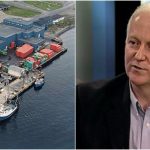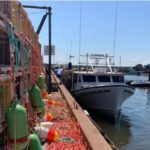Category Archives: Marine Science
Cocaine sharks: The hidden drug problem in the Gulf of Maine and oceans
 An article on the BBC and subsequently picked up by the New York Times just reinforced what I have been teaching for a long time. The article reports on a finding from the Oswaldo Cruz Foundation, which found high levels of cocaine in 13 Brazilian sharp-nosed sharks tested near Rio de Janeiro. So, how did the drugs get into the livers and muscles of the sharks? I can think of three possibilities. First, illegal drug labs might be discharging wastewater into the harbor. Second, sharks could have ingested floating cocaine packets dumped to evade authorities. Lastly, and most likely, local sewage discharge might be releasing large quantities of urine from drug users. more, >>CLICK TO READ<< 08:12
An article on the BBC and subsequently picked up by the New York Times just reinforced what I have been teaching for a long time. The article reports on a finding from the Oswaldo Cruz Foundation, which found high levels of cocaine in 13 Brazilian sharp-nosed sharks tested near Rio de Janeiro. So, how did the drugs get into the livers and muscles of the sharks? I can think of three possibilities. First, illegal drug labs might be discharging wastewater into the harbor. Second, sharks could have ingested floating cocaine packets dumped to evade authorities. Lastly, and most likely, local sewage discharge might be releasing large quantities of urine from drug users. more, >>CLICK TO READ<< 08:12
Athearn Marine Agency Boat of the Week: 54′ Steel Lobster/Scalloper/Longliner
 To review specifications, information, and 35 photos’, >click here<, To see all the boats in this series, >click here< 08:07
To review specifications, information, and 35 photos’, >click here<, To see all the boats in this series, >click here< 08:07
State backs lobstermen in urging regulators to reevaluate changes to minimum size
 The rules, which are set to go into effect on Jan. 1, 2025, will increase the minimum size from 3 1/4 inches to 3 5/16 inches, on the gauges that lobstermen use to measure lobsters and determine whether they are allowed to harvest them. A second increase would take effect two years later, bringing the minimum to 3 3/8 inches. The rules also affect the vents in traps that allow undersized lobsters to escape. The Atlantic States Marine Fisheries Commission says it is making the changes to preserve the long-term future of the lobster population in the Gulf of Maine, which federal data show has sharply dropped. Lobstermen also question the accuracy of the federal data – saying that it was corrected over a small and abnormal time frame that doesn’t indicate the reality of population trends. more, >>CLICK TO READ<< 06:23
The rules, which are set to go into effect on Jan. 1, 2025, will increase the minimum size from 3 1/4 inches to 3 5/16 inches, on the gauges that lobstermen use to measure lobsters and determine whether they are allowed to harvest them. A second increase would take effect two years later, bringing the minimum to 3 3/8 inches. The rules also affect the vents in traps that allow undersized lobsters to escape. The Atlantic States Marine Fisheries Commission says it is making the changes to preserve the long-term future of the lobster population in the Gulf of Maine, which federal data show has sharply dropped. Lobstermen also question the accuracy of the federal data – saying that it was corrected over a small and abnormal time frame that doesn’t indicate the reality of population trends. more, >>CLICK TO READ<< 06:23

Underwater cables linked to deformities and poor swimming ability in lobsters
Marine scientists used a specialist aquarium laboratory at St Abbs Marine Station in the Borders to expose more than 4,000 lobster and crab eggs to a level of electromagnetic field predicted to be equivalent to that experienced near underwater cables. Comparative groups of lobster and crab were not exposed in the research, which involved scientists from Heriot-Watt University in Edinburgh and St Abbs Marine Station. Researchers found lobsters exposed to the field were three times more likely to be deformed than those which were not, with bent and reduced tail sections the most common deformities, while some had disrupted eye development or puffy and swollen bodies. >click to read< 08:15
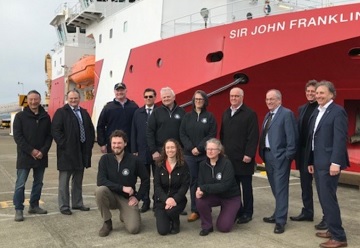
Researchers return from open-ocean Pacific salmon study
After spending more than a month at sea studying Pacific salmon, scientists and crew aboard the Sir John Franklin Coast Guard vessel returned to Victoria last week. The ship was one of four participating in the 2022 International Year of the Salmon Pan-Pacific Winter High Seas Expedition, which was the largest-ever research expedition to study salmon and their ecosystems in the North Pacific Ocean. The Sir John Franklin was joined in the expedition by a research vessel from the United States, a research vessel from Russia and a commercial fishing vessel from Canada. “All of the different countries have been tracking their salmon in fresh water and coastally, and very few other than the Russians have really gone far out into the open ocean.” >click to read< 19:40

New England’s Cod Quota Drops Again! The Problem Could Be a R/V Bigelow Trawl Issue
To whom this may concern. The Northeast Trawl Advisory Panel has been working on the overspreading issue and their solution is to put a restrictor rope between the doors to keep them from overspreading the net. This is not a realistic solution, as different depths need different lengths of wire, also one door striking a big rock, or any hang would affect the track of the other door. My question is why is overspreading occurring?!! >click to read<, Respectfully, Captain Sam Novello, Gloucester, Mass 22:23

2021 Irish Groundfish Survey Set for Later This Month
The annual Irish Groundfish Survey (IGFS) for 2021 will be carried out by the Marine Institute off the North West, West and South Coasts of Ireland from Saturday 30 October to Tuesday 14 December. The IGFS is a demersal trawl survey consisting of approximately 170 fishing hauls of 30-minute duration each in ICES areas VIa, VIIb, VIIg and VIIj. >click to read< 06:36

Brown Crab Behaviour Negatively Affected by Offshore Wind Farm Underwater Cables
Brown crabs are “mesmerised” by electromagnetism from underwater power cables from underwater power cables laid around Scotland for offshore wind farms,,, “Underwater cables emit an electromagnetic field. When it’s at a strength of 500 microteslas and above, which is about 5 per cent of the strength of a fridge door magnet, the crabs seem to be attracted to it and just sit still,” Alastair Lyndon of Heriot-Watt University said. “If they’re not moving, they’re not foraging for food or seeking a mate. >click to read< , with a link to the study.14:07

New fisheries research ship will monitor state of P.E.I. stocks
The Capt. Jacques Cartier took part in the 51st annual September survey in the Southern Gulf of St. Lawrence last month, along with the ship that it will eventually replace, the CCGS Teleost. The work follows an 18-month delay in getting the new ship operational because of malfunctions, delays receiving parts, and COVID-19-related travel restrictions in Nova Scotia.,, The research vessel will collect fish using a bottom trawl, then sort all the species, measuring and counting every creature drawn up. “For P.E.I. that would include lobster, mackerel, halibut. Essentially, all the oceanic species that are exploited in P.E.I.” photos, >click to read< 10:48
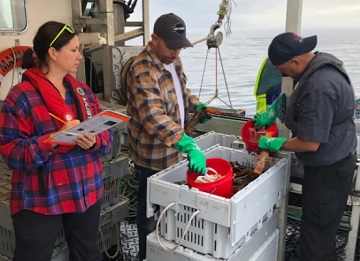
Sipekne’katik First Nation’s lobster study to assess impact of summer and fall fishing
The boat, Mamma Ain’t Happy, is owned by Sipekne’katik First Nation and is fishing under food, social, and ceremonial (FSC) tags. The tags are the licence under which the lobster can legally be fished and allow the band to harvest it for those purposes but not to sell it. After each trip, the catch is brought back to the community for lobster giveaways that feed most of the families in the second-largest Mi’kmaw band in Nova Scotia. But this boat doesn’t just fish for people’s supper. It’s also a data collection site for a study on lobster conservation. >click to read< 13:48
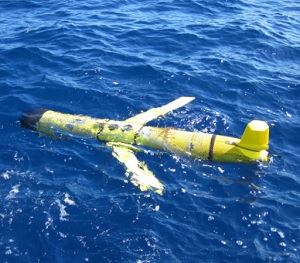
Underwater gliders will monitor North Atlantic right whales in the Gulf of St. Lawrence
The newest glider will carry a hydrophone, which can identify the calls of right whales and report their locations,,, “There is no one way to effectively determine where the whales are at any given moment when they are in the Gulf of St. Lawrence,” Fred Whoriskey said, “So we need to start blending our approaches.” Aerial surveillance is only good on sunny days with few waves, he said, adding that hydrophones mounted on fixed buoys have their limitations. “This year we are deploying gliders into the shipping channels,” he said. “They go down, listen and detect whale calls and come up to the surface periodically and broadcast information whether there are whales there or not.” >click to read< 11:25

How Might Fish Farms Be Affecting the Lobster? Let us count the ways.
“There is a tremendous amount of waste generated by fish farms,” Milewski says. “I don’t think people have a sense of the scale.” A fairly typical farm of about 600,000 fish will generate around 40 tonnes of waste every month during its 22-month production cycle. “It’s understandable how that waste can change lobsters’ behavior, distribution, and abundance,” she adds. But the review also identified serious gaps in our understanding of the interactions between aquaculture operations and lobsters. While some aspects, such as the use of chemical pesticides, have been well studied, information on others, including waste discharges, disease, and noise, are limited or entirely lacking. >click to read< 11:02

Canada adds warm-water fish to list of species monitored in DFO summer trawl survey off East Coast
Several warm-water fish species were added to the annual summer research vessel survey off the coast of Eastern Canada in 2020.,, Monitoring for the blackbelly rosefish, john dory, trigger fish, tilefish fish, dusky shark and others was included in the DFO summer trawl survey along the Scotian Shelf and Bay of Fundy for the first time last year. It was done at the request of the commercial fishing industry, which is capturing them accidentally, called bycatch, but cannot land them because they are not included in any Canadian commercial fish licence conditions. That doesn’t make sense to Alain d’Entremont, president and CEO of Scotia Harvest,,, “I think that if they are groundfish species and we are catching them as part of our regular fishing, then there should be mechanisms for us to be able to land them,,, >click to read< 16:55

Half Male – Half Female Chesapeake Blue Crab
This crab, known as a bilateral gynandromorphism, is about 4.5 inches long and is estimated to be in its third year. It has both blue and red claws at the tip and an apron (lower abdomen) split in the middle. Typically, male gazami crabs have blue toes and a T-shaped apron, while females have a red tip and a wide apron. Gynandromorphic crabs have not been reported on the East Coast for at least 15 years. Gynandromorphism does not occur in mammals, but has been observed in lobsters, crabs, snakes, butterflies, bees, chickens and other birds. Video, >click to read< 10:19

Something Smells Fishy: Allegations of Fraud in Ocean Acidification Research
While on tour in Australia in 2010, my friend, David Archibald said to me “Ocean Acidification is the last refuge of the climate scoundrels”. It appears he may be right. It also appears that James Cook University has a real research integrity problem, that Dr. Peter Ridd has pointed out, and got fired for daring to say it. From Science Magazine: Does ocean acidification alter fish behavior? Fraud allegations create a sea of doubt – In 2009, Munday and Dixson began to publish evidence that ocean acidification, a knock-on effect of the rising carbon dioxide level in Earth’s atmosphere, has a range of striking effects on fish behavior, such as making them bolder and steering them toward chemicals produced by their predators. But their work has come under attack. A group of seven young scientists, led by fish physiologist Timothy Clark of Deakin University, published a Nature paper reporting that in a massive, 3-year study, they didn’t see these dramatic effects of acidification on fish behavior at all. >click to read< 18:37

Female Sockeye salmon are dying at higher rates than males
Female adult sockeye from the Fraser River are dying at significantly higher rates than their male counterparts on the journey back to their spawning grounds, “This is causing skewed sex ratios in their spawning grounds, something that has been observed in recent years,” says lead researcher Dr. Scott Hinch, a professor in the faculty of forestry and head of the Pacific Salmon Ecology and Conservation Laboratory at UBC. “The implications on the health of Fraser River stocks are concerning, particularly as Pacific salmon populations in British Columbia have been declining over the past several decades.” >click to read< 15:48

Lessons From a Failed Experiment – When ‘Eradicated’ Species Bounce Back With a Vengeance
The study, published today in the journal PNAS, chronicles the effort and failure to eradicate invasive European green crabs from a California estuary. The crabs increased 30-fold after about 90 percent had been removed. The study is the first experimental demonstration in a coastal ecosystem of a dramatic population increase in response to full eradication. The crab is considered among the world’s top 100 invasive species, costing the U.S. commercial shellfish industry about $20 million in annual losses. >click to read< 08:09
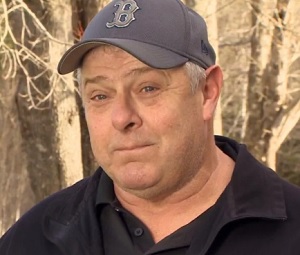
Would throwing the big ones back keep Atlantic halibut fishery on a roll? DFO considers changing the rules!
The investigation is being undertaken at the request of companies that fish halibut using hook and line from the Grand Banks off Newfoundland to Georges Bank off southern Nova Scotia. They’d like to see it happen. “Releasing large halibut is something that fishermen will say, and I will say, that’s just logical, because the majority of the large halibut are females. But you really don’t know just what goes on after you release a large halibut like that,” said Gary Dedrick, a halibut fisherman from Shelburne, N.S., and a founding member of the Atlantic Halibut Council. “So this is where there is monitoring on the bottom and how long they live.” >click to read< 09:45
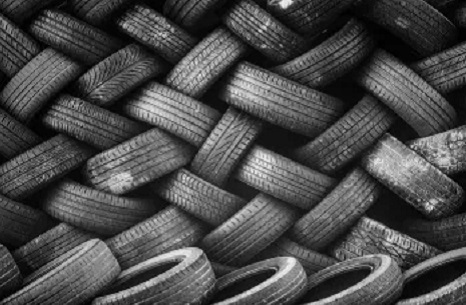
From the “Where the Rubber Meets the Road” Department: Automobile Tires Are Killing West Coast Salmon, Not Climate Change
Just last year, PBS and Popular Science were screaming about “climate change” being the cause of salmon deaths with headlines like “Climate Change is Killing Salmon in the Pacific Northwest” and “Climate change is cooking salmon in the Pacific Northwest.” It seems they were wrong. Dead wrong. New research from the University of Washington published December 3 in the journal Science, exonerates “climate change” in the salmon-killing caper and finds a surprise villain: an additive to automobile tires, not “climate change.” In fact, the researchers specifically ruled out climate change-driven water temperature increases as a cause. >click to read< 09:35

Spiny dogfish eat small Atlantic codfish! DNA may provide some answers
Conventional observations show that spiny dogfish in the western North Atlantic rarely eat Atlantic cod. However, some believe the rebuilding dogfish populations are limiting depleted cod numbers by competition or predation. To find out what is going on, NOAA Fisheries scientists looked to genetic testing to confirm cod presence in dogfish stomachs. >click to read< 13:10

“Wind is the culprit,” – NOAA study shows wind influence in GOA Pollock abundance
As Bob Dylan famously said “you don’t need a weatherman to know which way the wind blows.” The study conclusively shows for the first time that year-to-year variation in the geographic distribution of juvenile Pollock in the Gulf is driven by wind direction, which may keep juvenile Pollock in favorable habitat, or push them into currents and on to less favorable conditions. “Wind is the culprit,” according to AFSC biologist Matt Wilson. “The consequence is that when a large proportion of the juvenile population is transported to the southwest many of those fish are likely lost from the Gulf of Alaska.” >click to read< 11:17

Covid-19 Transmission and Mandatory On-Board Observers
You have two Senators and one Member of Congress representing you in Washington. If you are concerned with the recent NOAA/NMFS decision to once again require their observers on board commercial fishing vessels,, you should let them know, and you should let them know ASAP, Feds the observers will be back and looking for rides on August 14, w/links,,, More on Covid-19: We know that research cruises by the R/V Bigelow have been cancelled for (at least) the rest of this year. There must be a compelling Covid-19 related reason for this, and I’d suspect for the fact that NOAA/NMFS has been making it awfully hard to get solid info on where their research vessels are or aren’t,, Captains and crew members know the people who work with them,, On the other hand, mandatory fisheries observers are about as far from necessary as one can get in this pandemic year. While they unknowingly will be putting fishermen at risk, in actuality all they will be doing will be providing government scientists with data points for them to add to data sets that in instances go back fifty years or more. By Nils Stolpe >click to read< 15:35

Coronavirus: NOAA Cancels Five Large-Scale Fishery Surveys
NOAA announced Friday that it will cancel five out of its six large-scale research surveys in Alaskan waters this year due to COVID-19. The canceled surveys include the Aleutian Islands bottom trawl survey, the eastern Bering Sea bottom trawl survey, the northern Bering Sea bottom trawl survey, the Bering Sea pollock acoustics survey, and the Fall Ecosystem Survey. The Alaska Longline Survey is not affected. “We determined that there is no way to move forward with a survey plan that effectively minimizes risks to staff, crew, and the communities associated with the surveys. For instance, conducting the key groundfish and crab surveys in a limited timeframe would require extraordinarily long surveys, well beyond standard survey operations,” >click to read< 11:47

Eight Projects Selected for S-K Funding – Here we go again! Fisherman get the shaft, thanks to NOAA
To those fisherman who put in an application for Saltonstall-Kennedy Program Funding money, I feel badly for you who were not selected. Again, NOAA gave the money to universities, foundations, and other special interests and not you, who it should be for. Unfortunately for those who applied, this has been going on for years under NOAA’s selection of those that apply. I believe when authored by Senators Leverett Saltonstall (R-Mass.) and John F. Kennedy (D-Mass.) in 1954 to promote and market domestic seafood, that they didn’t think our fisherman would be left out. Two years ago, I was chosen by NOAA to serve on a panel to review those who applied.,, by Sam Parisi, >click to read< including the press release. 19:12

Cod Cannibalism: With natural prey like capelin and shrimp in decline, cod are eating their young
Stalled. That’s how research scientist Karen Dwyer of the Department of Fisheries and Oceans describes the northern cod stock following this year’s assessment. Ecosystem conditions appear to be the main factor, said Dwyer — especially low stocks of capelin and shrimp. “Both of those prey are very important in driving the population dynamics for cod,” she said. While there’s been an increase in different types of zooplankton, Dwyer said, there’s been a decrease in fatty zooplankton. “There used to be large numbers of large fatty zooplankton, full of fat, which are really good for young fish to eat, young fish such as capelin or even young cod,” she said. “Over time they’ve seen a decline in these large fatty zooplankton.” >click to read< 07:18

2J3KL Cod Scientific Update was recently released. Important information was not included
The Department of Fisheries and Oceans released an update of the scientific assessment for 2J3KL Cod on Friday, April 17, 2020. While the Newfoundland and Labrador Groundfish Industry Development Council appreciates the effort by DFO-Science in completing this update in the face of the Covid-19 pandemic, it appears that some important information was not included in the scientific deliberations. There is an internationally-accepted scientific model that has been used for this stock since 2016. This model provides information on overall stock biomass, fishing mortality, natural mortality and recruitment. All the data required to complete this analysis was available to scientists, but they chose not to run the model for this update. Contact: Jim Baird >click to read< 12:06

Scientists score salmon bonanza
On March 11, the chartered commercial trawler Pacific Legacy No. 1 left Victoria Harbour for a 25-day trip, carrying a large net to haul in salmon for examination. The vessel had been carrying three American scientists, along with three Russian and six Canadian researchers. U.S. scientists decided to return home when the vessel made a scheduled stop this week in Prince Rupert, said Nanaimo’s Richard Beamish, who is organizing the $1.45-million voyage with fellow scientist Brian Riddell. So far, catches have been “remarkable,” he said. “The science is going to be outstanding.” >click to read< 07:32






 I have long followed closely the development of issues related to fisheries, their management, scientific advice, political actions, and the behaviour of those who hold fishing rights. One could write books and produce documentaries on this topic. In fact, it might even warrant dedicated research, given the significant impact it has had on the development of Icelandic society over the past decades. This document focuses solely on the advice provided, its assumptions, and its outcomes. Magnús Jónsson – In 1957, two British fisheries scientists, Ray Beverton and Sidney Holt, proposed a hypothetical model (the BH model) that attempted to calculate the expected number of fish in a particular cohort based on the number of individuals in the previous generation. Although variations of this model (such as the Ricker model) have been used in fisheries science since then, the BH model remains today in use to describe the relationship between recruitment and the size of the spawning stock. Photos,
I have long followed closely the development of issues related to fisheries, their management, scientific advice, political actions, and the behaviour of those who hold fishing rights. One could write books and produce documentaries on this topic. In fact, it might even warrant dedicated research, given the significant impact it has had on the development of Icelandic society over the past decades. This document focuses solely on the advice provided, its assumptions, and its outcomes. Magnús Jónsson – In 1957, two British fisheries scientists, Ray Beverton and Sidney Holt, proposed a hypothetical model (the BH model) that attempted to calculate the expected number of fish in a particular cohort based on the number of individuals in the previous generation. Although variations of this model (such as the Ricker model) have been used in fisheries science since then, the BH model remains today in use to describe the relationship between recruitment and the size of the spawning stock. Photos, 
































